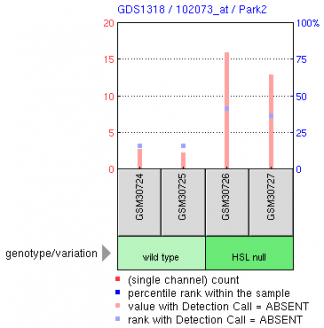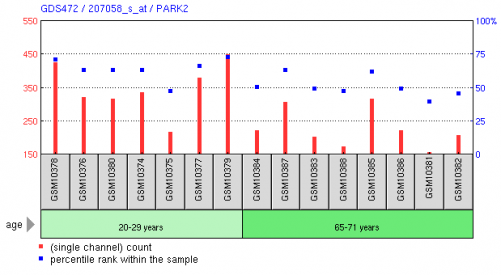This web page was produced as an assignment for Genetics 677, an undergraduate course at UW-Madison.
Microarray Expression
Microarrays are used to determine changes in gene expression following a signal or event. A good resource for finding results of microarray experiments is the online database Gene Expression Omnibus (GEO). The following gene expression profile (Figure 1) comes from an experiment that examined the effects of aging on gene expression in vastus lateralis skeletal muscle cells. The experimental groups were healthy young (20-29 year old) and older (65-71 year old) women. The profile shows that PARK2 expression levels are less in the older women compared to the younger women. These results make sense, since a majority of the reported cases of PD are the late-onset form that develops in the elderly, thereby correlating age to a decrease in PARK2 expression levels.

Figure 2: Expression of PARK2 in wild type mice and HSL deficient mice (1).
A second gene expression profile examined the PARK2 homolog in mice (Figure 2). The experiment looked at expression profiling of muscle from females lacking the hormone-sensitive lipase (HSL) gene. HSL is a key enzyme in fatty acid mobilization in adipocytes and found to be active in skeletal muscle metabolism. The profile shows that mice lacking the HSL gene have increased expression of PARK2 relative to wild type.
References
1. GEO Profiles. http://www.ncbi.nlm.nih.gov/geo/

